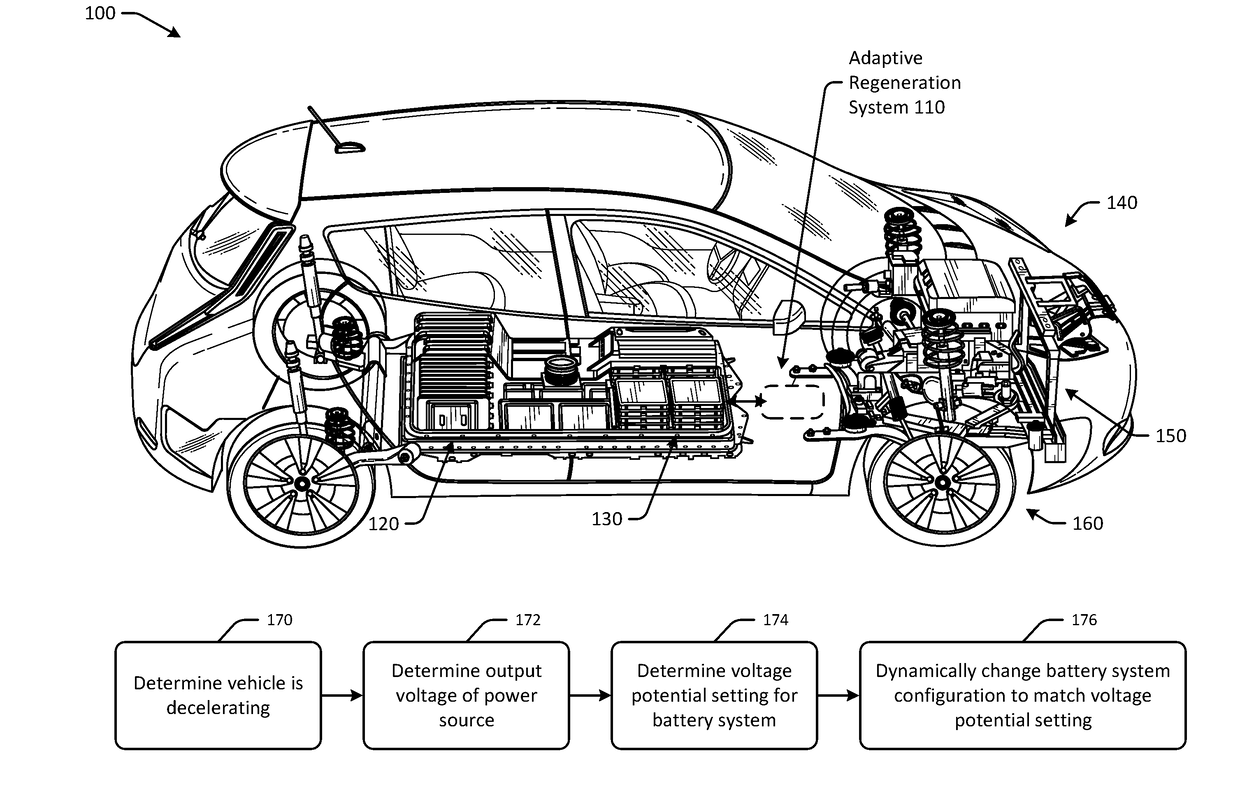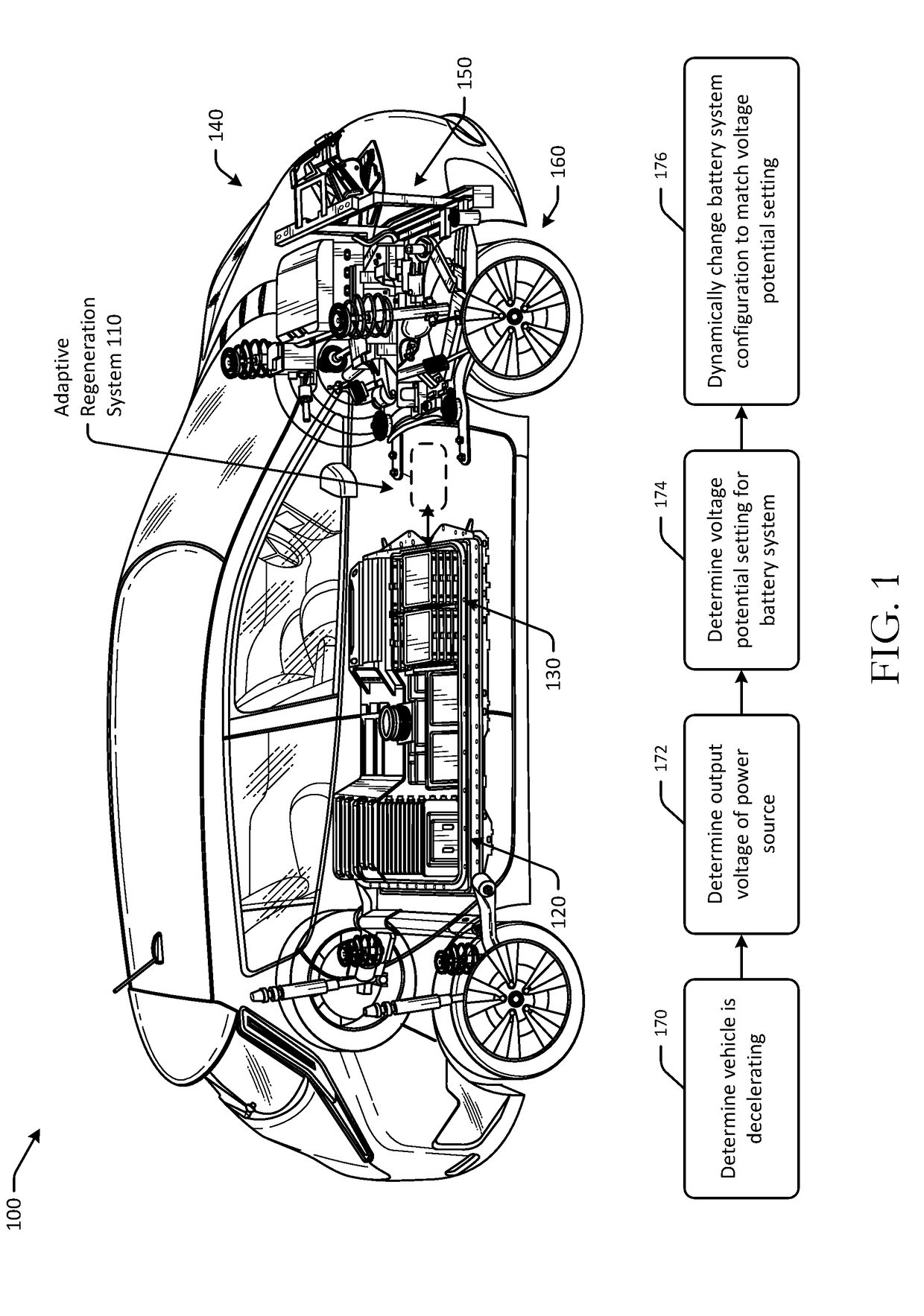Adaptive regeneration systems for electric vehicles
a technology of electric vehicles and regeneration systems, applied in the direction of electric generator control, vehicle sub-unit features, parallel/serial switching, etc., can solve the problems of difficulty in capturing energy when electric vehicles are moving at low speeds, damage to batteries, and time-consuming charging of batteries for subsequent us
- Summary
- Abstract
- Description
- Claims
- Application Information
AI Technical Summary
Benefits of technology
Problems solved by technology
Method used
Image
Examples
Embodiment Construction
Overview
[0012]Electric vehicles may use one or more rechargeable batteries to power the electric vehicle. For example, energy stored in batteries may be used to drive one or more motors and impart rotational motion to one or more of the wheels of the vehicle. The batteries may drain over time, and may need to be recharged before subsequent usage. The range of driving distance of the electric vehicle may be based at least in part on the number and capacity of batteries used by the vehicle, as well as the weight profile of the vehicle, size, and so forth. For example, an electric vehicle with a relatively greater battery or energy storage capacity may have a greater range or driving distance without recharging than an electric vehicle with relatively less battery or energy storage. In addition, the time to recharge batteries of the electric vehicle may be time consuming and may reduce the usefulness of the electric vehicle.
[0013]Embodiments of the disclosure include adaptive regenerat...
PUM
 Login to View More
Login to View More Abstract
Description
Claims
Application Information
 Login to View More
Login to View More - R&D
- Intellectual Property
- Life Sciences
- Materials
- Tech Scout
- Unparalleled Data Quality
- Higher Quality Content
- 60% Fewer Hallucinations
Browse by: Latest US Patents, China's latest patents, Technical Efficacy Thesaurus, Application Domain, Technology Topic, Popular Technical Reports.
© 2025 PatSnap. All rights reserved.Legal|Privacy policy|Modern Slavery Act Transparency Statement|Sitemap|About US| Contact US: help@patsnap.com



